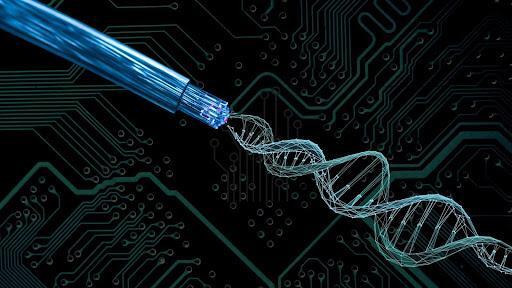
DNA’s Electron Flow May Unlock Future Biocompatible Electronics
The quest for more efficient and sustainable electronics has led researchers to explore the electrical properties of DNA, the molecule that contains the genetic instructions for life. Recent studies have revealed that DNA’s electron flow is influenced by molecular vibrations, or phonons, creating novel pathways for electron transport. This groundbreaking discovery has significant implications for the development of biocompatible electronics, paving the way for smaller, more efficient, and environmentally friendly devices.
In a study published in the journal Nature Physics, researchers from the University of Cambridge and the University of Groningen investigated the movement of electrons along DNA strands. By using advanced computational methods and experimental techniques, the team was able to simulate and measure the flow of electrons through DNA molecules.
The findings suggest that the vibrations of DNA’s molecular structure play a crucial role in facilitating electron transport. These vibrations, known as phonons, interact with the electrons, creating new pathways for electron flow. This phenomenon is known as electron-phonon coupling, and it has been observed in various materials, including metals and semiconductors.
In the case of DNA, the electron-phonon coupling is unique due to the molecule’s double-helical structure. The sugar and phosphate molecules that make up the backbone of DNA vibrate at specific frequencies, creating a dynamic environment that affects the movement of electrons.
“The interesting thing is that these vibrations are not random, they have a specific frequency and amplitude, which allows them to interact with electrons in a very specific way,” said Dr. Simon Kubala, a co-author of the study. “This interaction creates a new pathway for electron transport, which is not present in traditional electronic materials.”
The implications of this discovery are significant. Traditional electronic devices rely on metals and semiconductors, which have limitations in terms of size, efficiency, and environmental sustainability. DNA, on the other hand, is a biodegradable and biocompatible material that can be easily integrated into biological systems.
“The potential applications are huge,” said Dr. Kubala. “Imagine having electronic devices that are not only smaller and more efficient but also biocompatible and environmentally friendly. This could revolutionize the field of electronics and enable new applications in medicine, agriculture, and environmental monitoring.”
One potential application of DNA-based electronics is in the development of biosensors. These sensors could be used to detect specific biomarkers in the body, allowing for early diagnosis and treatment of diseases.
Another potential application is in the development of bio-inspired computing systems. DNA’s unique properties could enable the creation of ultra-dense storage systems and ultra-fast processing units, opening up new possibilities for artificial intelligence and machine learning.
While the idea of using DNA as a building block for electronics may seem unconventional, it is not without precedent. In the 1990s, researchers began exploring the electrical properties of DNA, and since then, there have been numerous studies on the topic.
In 2004, scientists demonstrated the first DNA-based electronic device, a simple diode made from DNA strands. Since then, researchers have developed more complex devices, including transistors and logic gates.
However, the recent discovery of electron-phonon coupling in DNA has taken the field to a new level. The unique properties of DNA’s electron flow could enable the creation of devices that are not only smaller and more efficient but also more sustainable and environmentally friendly.
As researchers continue to explore the electrical properties of DNA, the potential applications are vast and exciting. From biosensors and bio-inspired computing systems to energy harvesting and storage, DNA’s electron flow may unlock a new era of biocompatible electronics.
News Source:
https://researchmatters.in/news/researchers-study-how-electrons-move-dna-strands-electronic-applications






